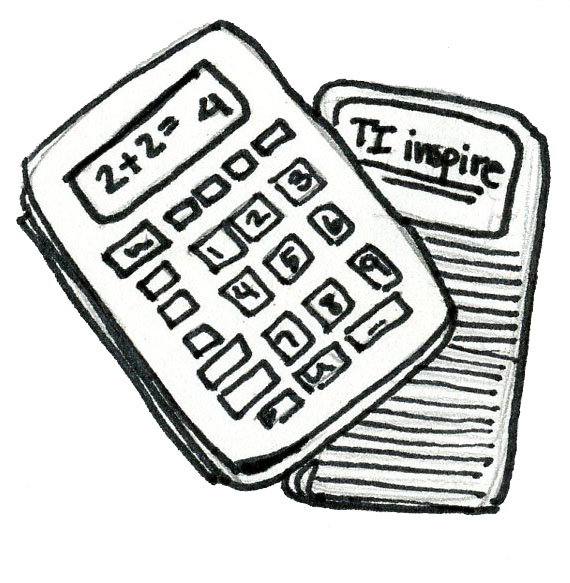Common Core poses opportunity for math curriculum refinement

Illustration by Jini John
November 6, 2015
South’s Math Department is looking to make curricular changes following the shift to the Common Core State Standards (CCSS) program, according to math teacher Elizabeth Bushek.
Illinois accepted CCSS in 2010, meaning that all public schools in the state have to meet certain standards required by this program. These changes were implemented statewide during the 2013-2014 school year. According to Bushek, this shift has caused everything in the curriculum to change.
“What [current high school students] were taught in second grade is completely different than what [students] are learning now,” Bushek said. “I think the goal of Common Core is to make [you] think in different ways […] that will help you become a better problem solver as you continue to grow.”
According to Beth Tsoumas, Assistant Superintendent of Curriculum, Assessment and Instruction for District 34, upon entering sixth grade, students are offered three paths for math: grade level (Common Core), single accelerated and double accelerated. By the end of eighth grade, students following the grade level curriculum will complete sixth, seventh and eighth grade CCSS. Students enrolled in the single accelerated program will complete CCSS 6-8 along with high school Algebra 1 and students enrolled in the double accelerated program will complete all that as well as high school Geometry.
“Our curriculum, assessments and instructional practices are fully aligned with the CCSS for each grade level in English Language Arts (ELA) and math,” Tsoumas said. “District 34 staff worked collaboratively to create these new curriculum maps. The new standards not only support students’ readiness for high school but put them on a trajectory to be college and career ready.”
According to Bushek, now each course will not only include what was taught in the past, but will also include new information and push students toward new ways of thinking. For example, the eighth grade CCSS curriculum will include aspects of Algebra 1, Geometry will include elements of Algebra 2, and Algebra 2 will go into concepts taught in Precalculus.
“It’s not the same course,” Bushek said. “It’s not like ‘Oh, now you can’t get as far.’ The courses [themselves] are changing.”
According to Tsoumas, the transition to CCSS will allow students to share a common set of standards which she thinks will serve to help them.
“True implementation of CCSS, done with fidelity, will benefit all students,” Tsoumas said. “When implemented as intended, with aligned mathematical practices and instructional shifts, students will achieve a much deeper understanding of mathematical concepts and will be able to apply knowledge and skills at much higher level.”
According to Philip Gartner, instructional supervisor of the Math Department, a change that was already made to the Math Department was the elimination of the Algebra 3 course in the ‘studies’ sequence. This was a direct result of the switch to Common Core.
“Because of changes with Common Core pushing more and more material earlier and making courses more and more rigorous, our Algebra 2 Studies has really become a more complete […]experience for our students,” Gartner said. “[So] the Algebra 3 Studies [course] is now no longer needed.”
With this change, students that complete Algebra 2 Studies will now be able to take a Precalculus class, which Gartner believes will benefit them in the future.
“There may be a night that they’re working on their homework during their senior year where they’re feeling like, ‘Oh, I wish this class were easier’,” Gartner said. “But, they might appreciate it the next year when they don’t have to take a math class for no credit, because they placed into a higher math course or they’re able to place out of math completely […] because they were so well-prepared from that Precalculus [course].”
According to Gartner, another change that is being discussed is the possible merge of the Precalculus with Statistics and Precalculus Discrete classes into a one-year Precalculus course, which, if approved, will likely be implemented in the 2017-2018 school year.
“In the past, we’ve really valued our two-year sequence and thought that it was good for students, prepared them well and integrated a lot of statistics into the program,” Gartner said. “But, with Common Core, a lot of statistics is being integrated into the middle school [curriculum] and Algebra 1 and Algebra 2. While statistics remains very important, we don’t think it needs as much emphasis in that Precalculus course as it once did.”
Although this change has not yet been approved, Gartner acknowledges that this change could be beneficial for students by allowing them to advance further in math and be better prepared for college.
“Moving to a one-year Precalculus, I think, [would] open doors for some [students] who really would like to have that senior year option of taking an AP Statistics or an AP Calculus [course],” Gartner said.
According to Gartner, these changes will not only affect students, but teachers as well. Along with figuring out how to approach the change in content required by Common Core, teachers may also need to take into consideration the pacing of the class and their instructional practices.
“We want to make sure that we’re not just teaching content, but students are learning and engaged, and they’re having opportunities to problem-solve and discuss and collaborate [with each other],” Gartner said.
According to Gartner, some of these changes might make the curriculum more challenging for students. However, he believes that they will be able to work through it and that it will be an appropriate challenge which will help to prepare them for college and their future.
“For some students, it can mean a little bit more [of a] challenge and needing to work hard and get help from their teachers, […] and we know that our students can do that,” Gartner said.


